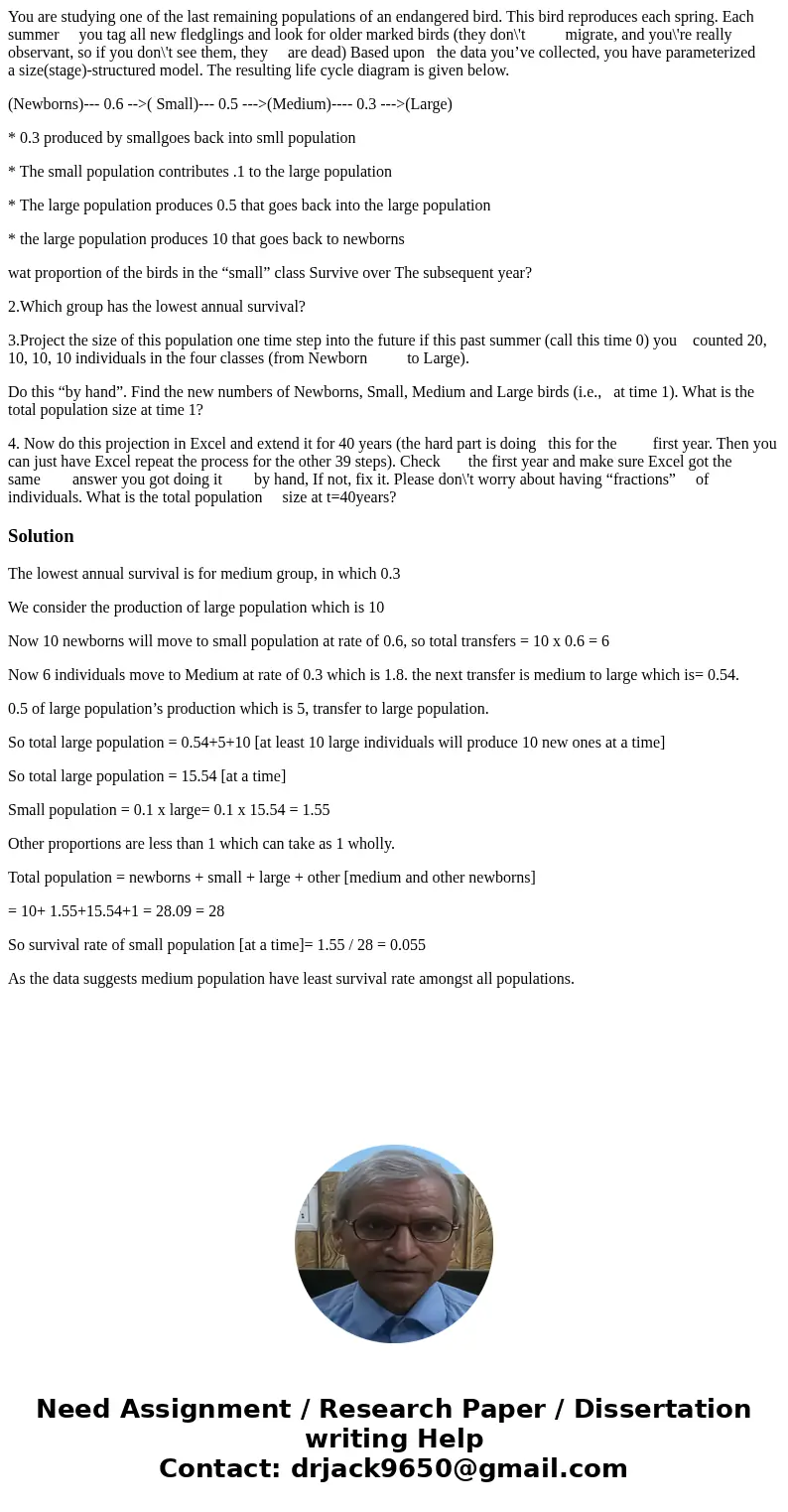You are studying one of the last remaining populations of an
You are studying one of the last remaining populations of an endangered bird. This bird reproduces each spring. Each summer you tag all new fledglings and look for older marked birds (they don\'t migrate, and you\'re really observant, so if you don\'t see them, they are dead) Based upon the data you’ve collected, you have parameterized a size(stage)-structured model. The resulting life cycle diagram is given below.
(Newborns)--- 0.6 -->( Small)--- 0.5 --->(Medium)---- 0.3 --->(Large)
* 0.3 produced by smallgoes back into smll population
* The small population contributes .1 to the large population
* The large population produces 0.5 that goes back into the large population
* the large population produces 10 that goes back to newborns
wat proportion of the birds in the “small” class Survive over The subsequent year?
2.Which group has the lowest annual survival?
3.Project the size of this population one time step into the future if this past summer (call this time 0) you counted 20, 10, 10, 10 individuals in the four classes (from Newborn to Large).
Do this “by hand”. Find the new numbers of Newborns, Small, Medium and Large birds (i.e., at time 1). What is the total population size at time 1?
4. Now do this projection in Excel and extend it for 40 years (the hard part is doing this for the first year. Then you can just have Excel repeat the process for the other 39 steps). Check the first year and make sure Excel got the same answer you got doing it by hand, If not, fix it. Please don\'t worry about having “fractions” of individuals. What is the total population size at t=40years?
Solution
The lowest annual survival is for medium group, in which 0.3
We consider the production of large population which is 10
Now 10 newborns will move to small population at rate of 0.6, so total transfers = 10 x 0.6 = 6
Now 6 individuals move to Medium at rate of 0.3 which is 1.8. the next transfer is medium to large which is= 0.54.
0.5 of large population’s production which is 5, transfer to large population.
So total large population = 0.54+5+10 [at least 10 large individuals will produce 10 new ones at a time]
So total large population = 15.54 [at a time]
Small population = 0.1 x large= 0.1 x 15.54 = 1.55
Other proportions are less than 1 which can take as 1 wholly.
Total population = newborns + small + large + other [medium and other newborns]
= 10+ 1.55+15.54+1 = 28.09 = 28
So survival rate of small population [at a time]= 1.55 / 28 = 0.055
As the data suggests medium population have least survival rate amongst all populations.

 Homework Sourse
Homework Sourse